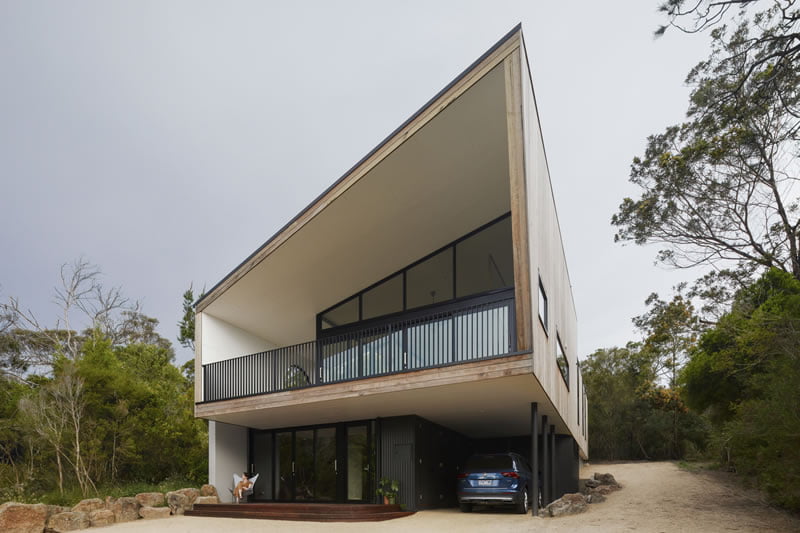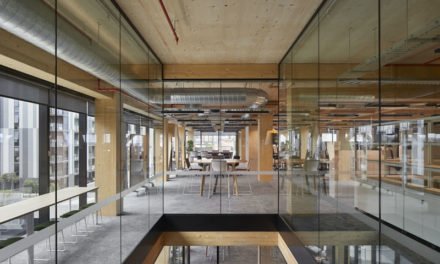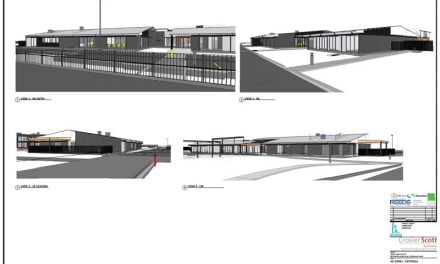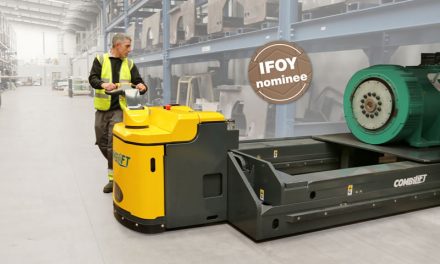Architects and other specifiers are choosing recycled timbers for their durability, carbon storage and beauty, and getting the added bonus of healthy, welcoming spaces.
Main image: Clad in recycled red ironbark that has been allowed to silver, the McCrae Bush House sits comfortably in its Mornington Peninsula setting. Photo by Tatjana Plitt, courtesy Chan Architecture
Early on in Michael Kennedy’s time as a champion of recycled timber, most sales were made on beauty and backstory. “The aesthetics of these timbers are so strong, and people love to hear about the old warehouses or bridges or whatever that they were once a part of,” he says.
But in recent years, another driving force has emerged. “People want to use products that store carbon and have a low carbon footprint in their manufacturing,” Kennedy says. “Recycled timber does that far better than any other product. I have people asking what it costs to produce our products in terms of carbon input. And that’s really important for them in making their decision.
“In our business, we produce about 45% of our own electricity from our solar panels, and we get the rest from green energy. So our product has a net carbon benefit – the timber itself is storing carbon and we’re not emitting carbon in the processing of it. Add to that the high durability of recycled timber and the fact you’re saving it from landfill, where it may eventually degrade in wet conditions and release carbon and it’s an obvious winner.”
The recycled offer at Kennedy’s Timbers comes out of vintage and historical buildings and structures that are being knocked down; usually warehouses and factories that have reached the end of their service life or cut out of bridge or dock timbers, power poles and similar sources.
“We often get a call from whoever will be taking the building down at the point of tendering,” says Kennedy, “and we can give them a price on what the salvage value will be to help them in their tendering process. And then they can factor that into their cost.
“We can help them with that timber recovery as well, if need be, whether that’s picking up from site or providing expertise in terms of how it’s pulled out to get a maximum value. Because that’s important. It’s not like it’s steel, or concrete that gets crushed up, we need the timber to be in its original wood form not with splits or damaged too much, so we can maximise the recovery out of it.”
Landfill levies such as the one that has been in place in Queensland for three years are increasingly common across the nation. Kennedy says, “There’s a financial incentive for people, when they have a timber structure reaching the end of its life, to look at how they can divert it into beneficial re-use. On top of the economic benefit of doing that, there’s a carbon benefit as well, which people are increasingly looking towards. If you’re a business that can show you divert materials from landfill, you’re a business that can land contracts on that difference. And then businesses like ours can sell those timbers.”
Kennedy’s clients range from private residential builds, to high-end commercial, public buildings and educational sector structures. Neither of the following two projects were originally committed to using timber, let alone recycled, but in both cases it was easy for the Kennedy’s team to show that their product was the best choice.
McCrae bush house
Designed by Melbourne’s Chan Architecture, this open, airy house on the Mornington Peninsula sits amid the trees with views over Port Phillip Bay.
Sustainability was a key part of the brief, with the owners specifying recycled, low-chemical and low-carbon materials to the architect. “The aesthetic appeal was also part of that,” says Kennedy, “particularly the exterior cladding. It’s quite a beautiful house that uses red ironbark all around the outside, but also continues it inside.”
That choice was driven by the architect, who investigated a range of materials that could meet his criteria. Because of the location, the exterior materials had to be durable in a variety of conditions including salt-laden winds, to meet a BAL 29 rating, to be low maintenance, to be able to flow from the outside to the inside and to look good.
“Our recycled ironbark won out in that analysis from the architect,” Kennedy says. “And it also won over the client: they loved it and continue to love it.”
The Class 1 durability ironwood was salvaged from roof purlins that came out of a West End (south Brisbane) factory warehouse that was demolished in 2020. Naturally rated to BAL 29, it was de-nailed, re-sawn, precision profiled and graded to AS 2796.1 before being supplied in set lengths of cladding to the builder.
Outside, the cladding is already silvering, helping the house to settle quietly into the landscape. Inside, red ironbark continues as a feature of the large meditation room that dominates the ground floor and plays a key role in the clients’ daily lives. Here, it retains its rich colouring and a warm, tactile finish.
“It’s a perfect example of what’s called the Biophilia effect,” says Kennedy. “When you’re in an environment that has natural materials in it, you feel better. That’s why wood is being increasingly used in public spaces like hospitals and schools, because it helps people recover more quickly or to learn. In retail outlets, it’s a better environment for customers to buy.
“We have a saying in our business. If you want to sell beer, just add wood, because pubs built with wood sell more beer. If you build a house and put wood in it, you’re going to feel better in that house and within yourself. It has a calming effect.”
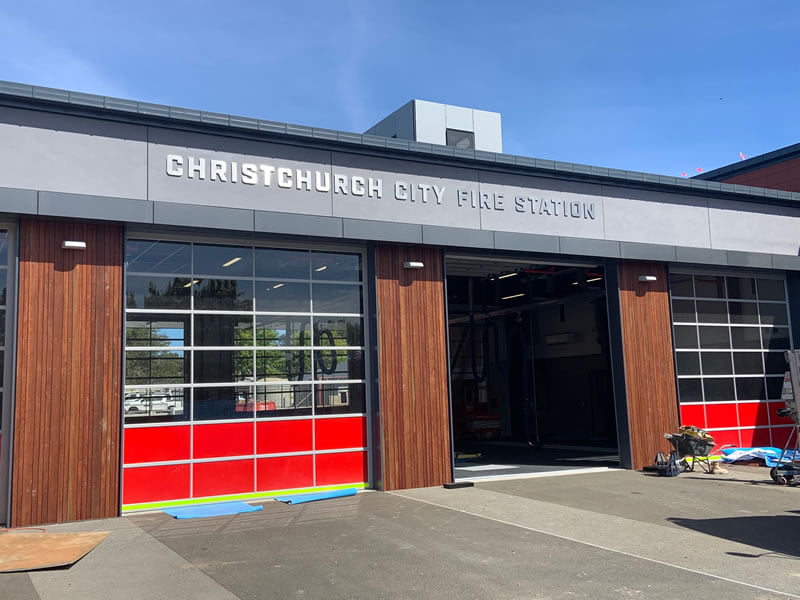
Christchurch fire station
At almost the opposite end of the building spectrum from a meditation-focused home in Victoria is a busy working fire station in Christchurch, New Zealand, but that job has also been clad in recycled red ironbark.
“If you said to the average person, ‘I want to build a fire station out of wood’, they’d go ‘Whoa, what the hell?’” Kennedy says. “But it was a similar case to the McCrae Bush House: the client wanted something that was durable and low maintenance, but also meets BAL 29 fire resistance and the product that we specified does that.
“On top of that, they wanted a product that is environmentally friendly to produce.”
Kennedy’s New Zealand-based partner LMA Timber bid for the contract and the finished product has been so well received that the same cladding will be used for new fire stations in Sumner, Kaikoura and Kaiapoi in the coming months.
“The MD of LMA, Martin Thompson, knew the brief for the fire station started with durability, so he put this product forward and was able to show that it had good environmental credentials and ticked their boxes when it came to low carbon cost,” says Kennedy. “And when they evaluated all their options through a matrix of practicality, cost and environmental benefits, this was a clear winner.”
Kennedy believes that the pivot to carbon cost as a significant part of materials choices is strongly benefiting wood. “It answers all their needs without sacrificing strength, durability or looks. They are welcoming places to be in and there is an enormous range of options, so you can find a wood product to work in practically any situation. We’re seeing it being increasingly used in buildings that traditionally would never include timber, like fire stations, health care facilities, child care and schools.”
New Zealand has proved to be a particularly strong market for Kennedy’s recycled product. Part of this is due to the nation’s love for natural materials, with stone and timber featuring heavily, part is due to timber’s ability to cope well with earth tremors, wind and rain. “Timber buildings are the most resilient,” Kennedy says. “They’ve got the most flex and if you use the right product in the right application, timber can be a very, very long-lasting low-maintenance product if it’s detailed well and designed well.
“Remember, these are hardwoods that have in many cases already lasted for 50, 70 or 100 years in their first lives. They have a strong ability to come through catastrophes like flood and fire, better than many other materials, and can withstand significant variables in temperature and climate affects.”
Although the take-up of timber in public buildings has been slower in Australia, Kennedy is optimistic that is about to change. He says, “The story that wood has to tell is reaching new ears, ones that are receptive, and they’re accepting it and going ‘Ah yes, this is the solution we’re looking for.’
“You can see that in some of the major public builds in recent years, like Marrickville Library. It uses some of our recycled blackbutt, which ties into the history of the area and creates an inviting space for the whole community. It’s won multiple awards and become a hub for people who weren’t previously library users. That’s a powerful argument for including timber in a build.”
For more on recycled timber, visit www.kennedystimbers.com.au, www.chanarchitecture.com.au and www.lmatimber.co.nz

